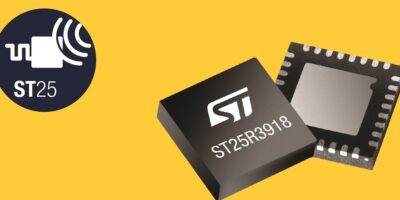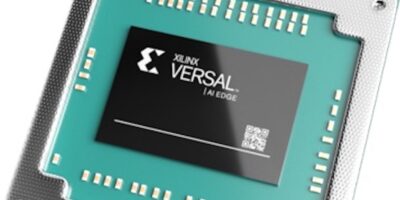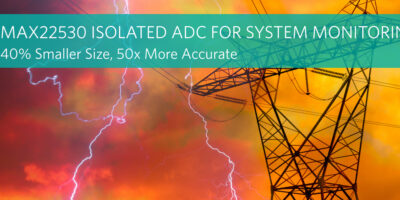Accessory identification for a wide range of applications including power tools and personal healthcare devices can be cost-effectively implemented with the ST25R3918 multi-purpose NFC transceiver. Developed by STMicroelectronics it supports passive peer-to-peer functionality and NFC card-emulation mode as well as NFC reader operation.
According to STMicroelectronics, it delivers most of the functionality of the company’s ST25R3916 NFC reader at a competitive price. The ST25R3918 ST25R3918 interacts seamlessly with ST25 tags and its close relationship to the ST25R3916 simplifies hardware design and certification.
The transceiver supports NFC-A and NFC-F card emulation and can be used as an NFC-A/B (ISO 14443A/B) card reader up to high bit rates, and as an NFC-V (ISO 15693) reader up to 53kbits per second. It can also be used as an ISO 18092 passive initiator and target.
The card emulation mode allows support for the newest features available on mobile phones, ST adds. Phones can interact with applications that use the ST25R3918, including using a simple tap to start apps on the phone. Device programming and simple NFC data exchange format (NDEF) data transfers are also permitted. In addition, users can leverage special stream and transparent modes of the analogue front end (AFE) and framing system to implement other custom protocols in card-reader and card emulation modes.
Combined with the reader mode, the ST25R3918 allows scanning for nearby tags for tasks such as replaceable detection and parameter setting, or simply reading an access card. The user can interact with the mobile phone while collecting data on customer behaviour and accessories used, which adds an additional stream of information for product development.
The ST25R3918 transceiver has high sensitivity and ST’s Noise Suppression Receiver (NSR) technology for extended read range. It can be operated with output power around 0.5W in noisy and harsh environments. The ST25R3918 also includes a low-power card-detection mode to scan for the presence of a card by measuring the amplitude or phase of the antenna signal. A low power RC oscillator and wake-up timer automatically reactivates the ST25R3918 after a selected time period to check for the presence of a tag.
Other features include support for dynamic power output (DPO), which automatically controls the field strength to meet the required limits. There is also active wave shaping (AWS) to smooth the waveform for better signal integrity.
The ST25R3918 operates from a wide power-supply voltage range of 2.6 to 5.5V between -40 and +85 degrees C, and 2.4 to 5.5V in the temperature range from -20 to +85 degrees C, with a peripheral I/O voltage range of 1.65 to 5.5V.
The ST25R3918 is available now







